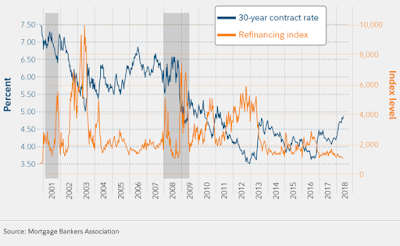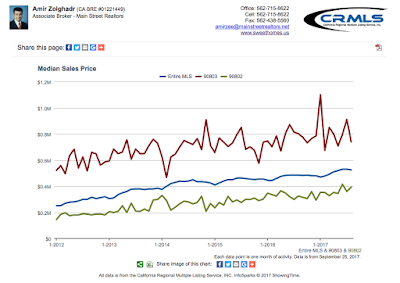Persons over age 55 or severely and permanently disabled may qualify for property tax savings when they sell their principal home and buy a replacement residence of the same or lower value. To learn how to qualify, read the following fundamental questions and answers.
Proposition 60 amended the California Constitution in November 1986. It allows qualified persons over the age of 55 to transfer the base year values from a former residence (“original property”) to a replacement residence under certain conditions.
First, the claimant must be age 55 or older, and own and occupy the original residential property as the owner’s principal residence as of the date of transfer to a new owner. If the claimant is married and resides there with his spouse, then both spouses qualify if either one of them is at least age 55 as of the date of transfer.
What is a “transfer of the base year value”?
Let’s take this step by step. The base year is the year in which the property or portion thereof is purchased, newly constructed, or a reappraisal ownership change occurs. The base year value, also called “original base year value,” is the full market value of the home in the base year. The total market value is typically determined by either the purchase price or the Proposition 13 value. Proposition 13 was a 1978 amendment of the California Constitution (Article XIIIA), aimed at controlling housing price increases. It limited the assessed value of existing homes to 1975-1976 values, limited tax rates to one percent of assessed value (plus any voter-approved surcharges), and limited inflation-based increases to two percent annually. Proposition 13 value is the full market value, adjusted according to these limits. Thus, the factored base year value of the original residence is the original base year value, adjusted by the annual inflation factor for each taxable year under the current ownership. Prop 60 allows this value of the original residence to be transferred to the replacement home.
What other "conditions" must be met to qualify?
Both the original and replacement properties must be located in the same county; and
The original property must have been eligible for either the homeowner’s exemption (claimant owned and occupied it as a principal residence at the time of sale or within two years of the acquisition of the replacement property) or entitled to the disabled veteran’s exemption (a veteran with service-related disability and California resident on January1 of claim year); and The replacement dwelling must be of equal or lesser value than the original property; and The replacement dwelling must have been acquired or newly constructed within two years before or after the sale of the original property as long as the replacement property was purchased or newly built on or after November 6, 1986;
and The original property must be subject to reappraisal at its current "fair market value" as a result of its transfer, by Revenue & Taxation Code sections 110.1 or 5803; and
A claim must be filed within three years of the replacement dwelling purchase or completion of new construction of the replacement dwelling.
What if I jointly own the property with someone who is not my spouse?
The same rule applies. If there are two or more co-owners of a dwelling, all owners qualify if only one owner of record is over 55 and if that owner/claimant occupies the property as of
the date of the transfer.
How often can I claim the Proposition 60 benefit?
The benefits of the Proposition 60 exclusion are granted only once in a claimant’s lifetime. As a co-tenant of the original property with another owner, may I receive a partial benefit if we apply for the exclusion and buy separate replacement homes?
No. Only one co-owner of a qualified original property may receive the benefit in this situation. The co-owners must choose between themselves which one will make a claim. The only exception is a multiple-residence original property (such as a duplex), where multiple owners qualify for separate homeowner’s exemptions. In that case, each owner may transfer a portion of the original property’s value to his separate replacement dwelling.
Does Prop 60 apply if I make a gift of my original property to my children and I buy a replacement?
No. A gift of the original home to the owner’s child, while the owner is alive or through a will upon the owner’s death, does not qualify. The original property must be sold in exchange for something of monetary value (“consideration”) and be subject to reappraisal at full market value at the time of transfer.
What is "equal or lesser value" of the replacement dwelling?
In most cases, where the replacement property is purchased before or at the same time as the original, the market value of the replacement must be 100 % or less of the market value of the original.
Must I buy the replacement home before I sell my original residence?
No. You have up to two years before or after the sale of the original residence to buy a replacement. The date of the replacement’s purchase determines the relative market value that is required to qualify under Prop 60. Thus, (1) if thereplacement is purchased or newly built before the original property is sold, the replacement’s value must be 100% or less than the market value of the original; (2) if the replacement dwelling is acquired or newly built within one year after the original is sold, the replacement’s value must be not more than 105% of the original’s value; and (3) if the replacement isacquired or newly built within two years after the original is sold, the replacement’s value must be not more than 110% of the original’s. Market value is not necessarily the purchase or sale price—it is determined by the county assessor.
As the sole owner of an original property, may I qualify when I jointly buy a share of a replacement?
Yes, you may, as long as you are otherwise qualified, regardless of how many co-owners buy the replacement. All co-owners will share your benefit, although they need not join in your claim. You may not claim the benefit again, but the others may. (Ref. LTA 91/80.)
May one sole owner of qualified original home and another sole owner of a separate eligible original home apply their separate Prop 60 benefits to the same replacement residence they buy jointly?
No. Each owner may only receive the benefit of a single claim. The owners may not combine their benefits to buy a replacement dwelling of equal or less value than the original combined value.
PROPOSITION 90:
FOR PROPERTIES IN DIFFERENT COUNTIES
Prop 60 requires that both the old and new homes be within the same county. Prop 90, adopted in 1988, extends Prop 60’s benefits to homes in two counties, but only if the county of the replacement property has adopted a county ordinance permitting the local county assessor to apply the value determined by the county assessor of the original home.
Which counties grant Prop 90 exclusions?
As of October 2000, these counties had adopted an ordinance making Prop 60 benefits available to local replacement dwellings: Alameda, Los Angeles, Orange, San Diego, Ventura, San Mateo, and Santa Clara. For more information, contact the county assessor in the county where you plan to buy.
PROPOSITION 110:
FOR SEVERELY DISABLED PERSONS
Proposition 110 was adopted on June 5, 1990, to extend Prop 60 to severely disabled persons residing permanently in the property. Also, in existing homes qualified for a homeowner’s exemption, certain construction, modifications, or installations intended to increase accessibility for an owner or an owner’s severely and permanently disabled spouse, are excluded from reappraisal.
Do I also need to be 55 or older to qualify?
No. Prop 110 applies regardless of age.
What other conditions must be met?
The replacement property must be newly built or purchased on or after June 6, 1990; and
The disability must be appropriately certified; and
The claimant must not have previously benefited from a replacement dwelling exclusion. However, an exception applies to successful claimants under Props 60 or 90 who later become severely and permanently disabled: they may qualify again, under Prop 110. (Ref. LTA 97/02, R&T
Code §69.5.)
Information courtesy of LA County 














